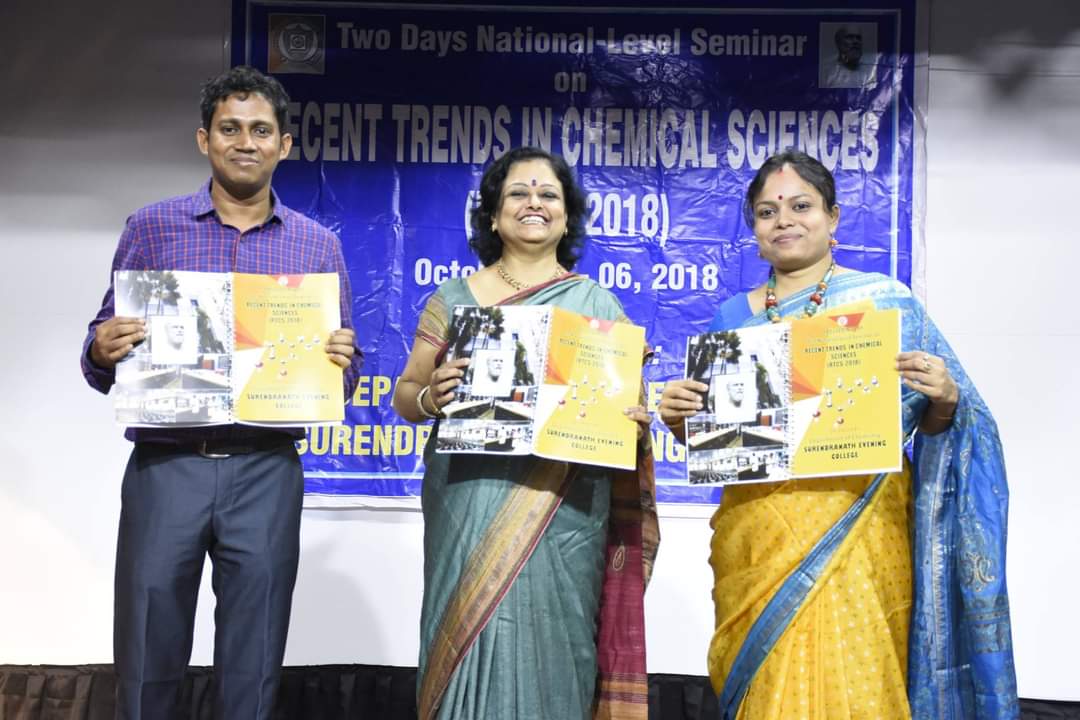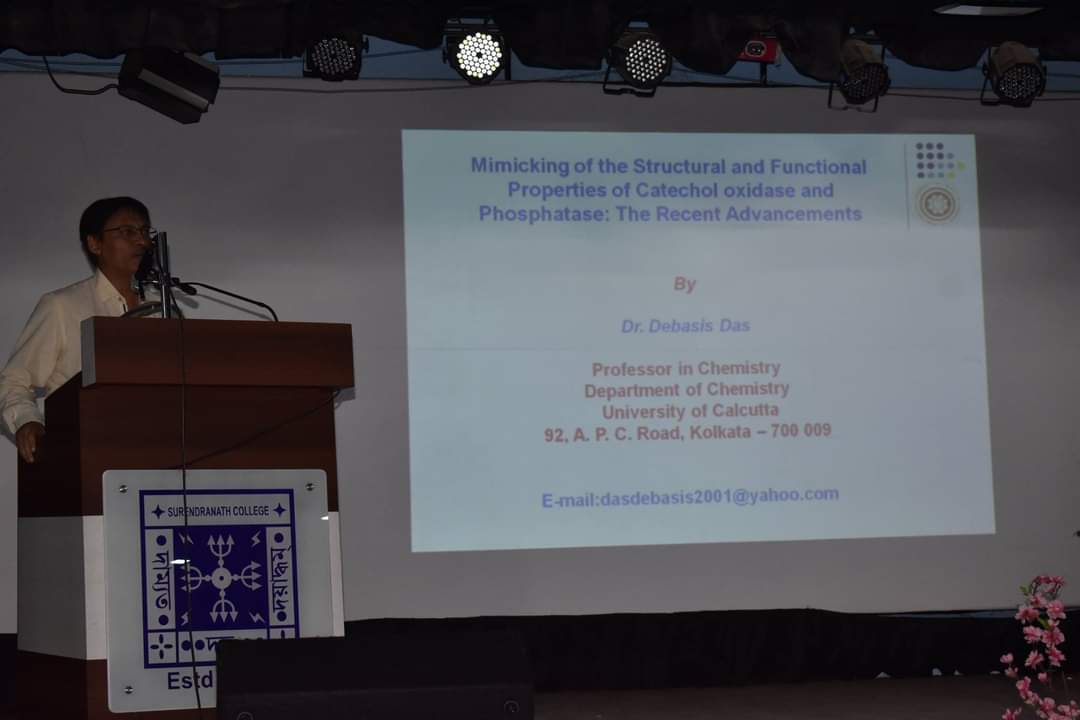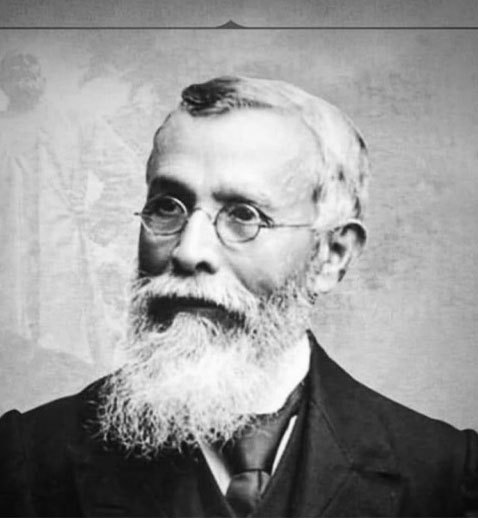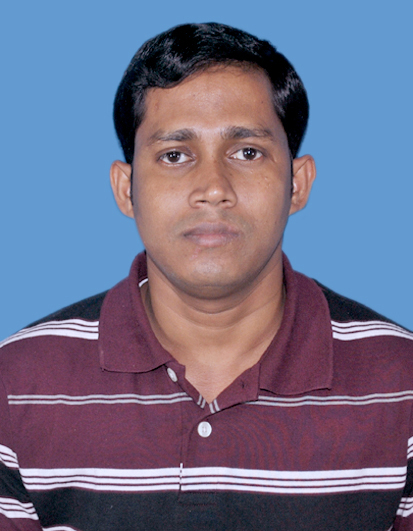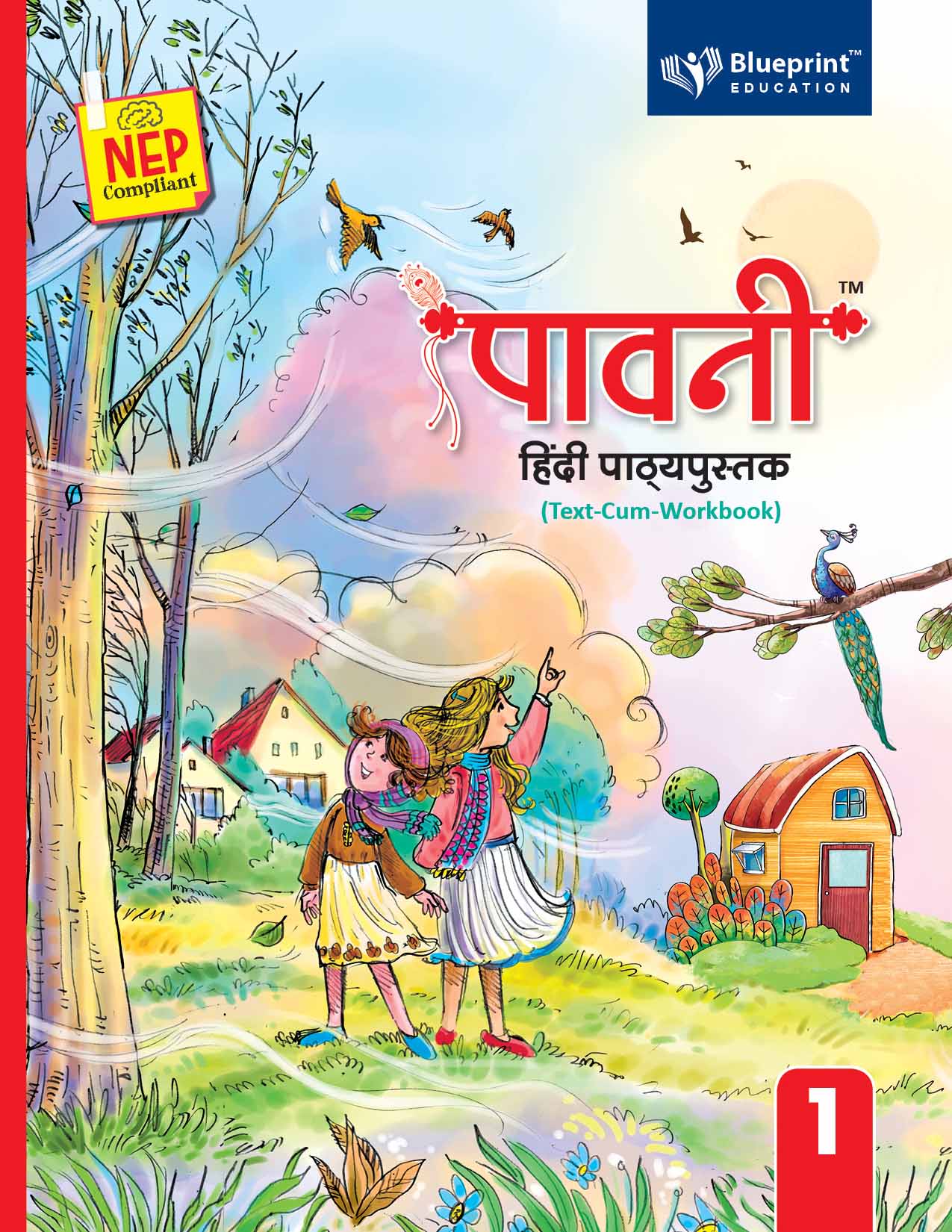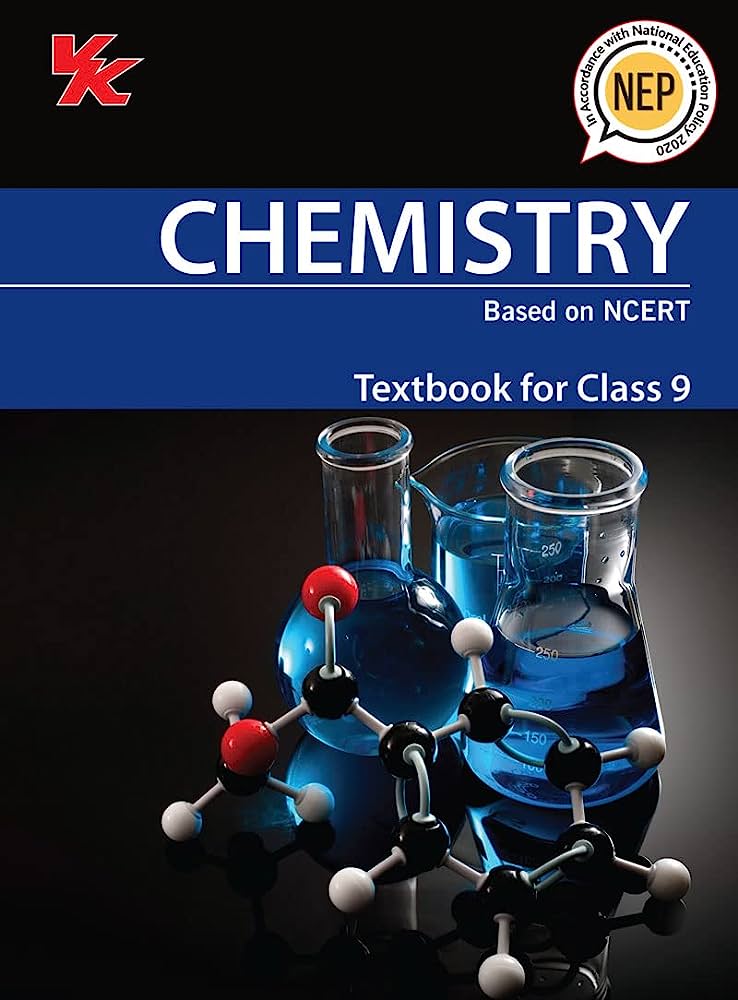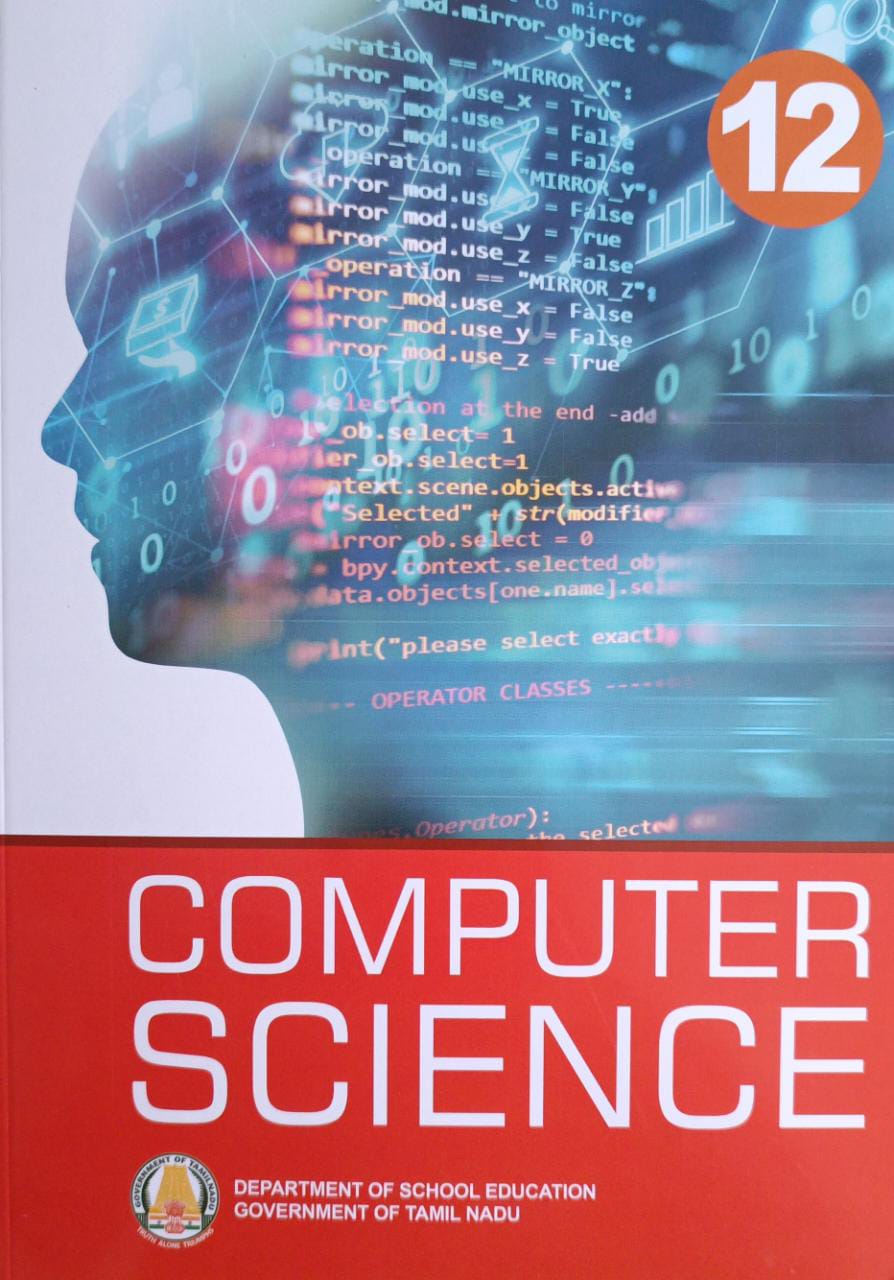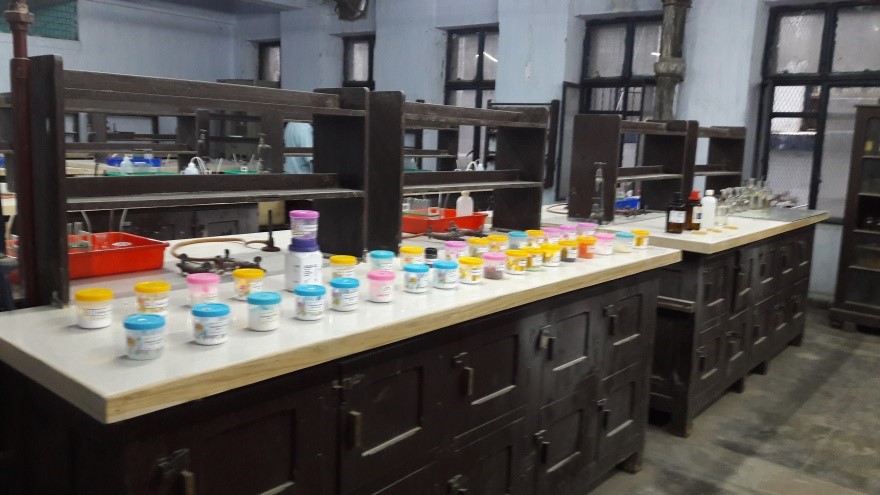
The Department of Chemistry has three well-equipped laboratories. One of the laboratories is fully air-conditioned with many sophisticated instruments for the benefit of students. One of the classrooms (Chemistry Gallery) is an ICT classroom with all the modern amenities to give our students exposure to power point presentation of some topics along with the normal chalk-board conventional method of teaching. Out of five government sanctioned posts presently four of them are filled. There are total five faculty members in the department of chemistry and they give maximum time in departmental work. All the teachers have sound research career with four of them having Ph.D. degree and in addition two of our teachers have post-doctoral research experience. The faculties are also engaged actively in research helps in promoting research interest in our students’ right from the beginning of their academic career. The department also has one skilled lab-attendant and two other support staffs for smooth running of the practical classes. The department has a departmental library of its own with a good collection of books which are borrowed by the students on a regular basis. The department has dedicated computer for the use of students with high speed wi-fi connection. Since we are affiliated under the aegis of University of Calcutta we follow their curriculum. The department came into existence from the very beginning of our college in 1961 with only General course but from 2015, the University of Calcutta gave affiliation for running the Honours course in the UG level in Chemistry. Presently we are running the three-year CBCS pattern and also the newly introduced four-year NEP pattern successfully.
More images:

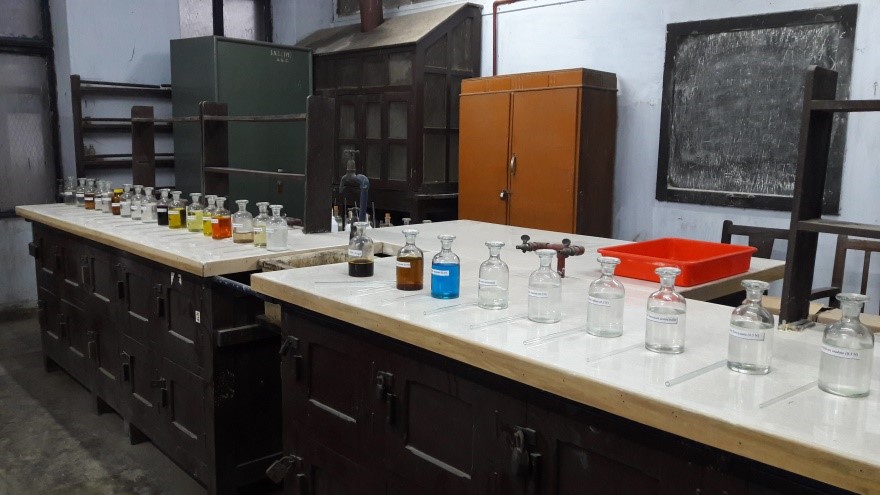
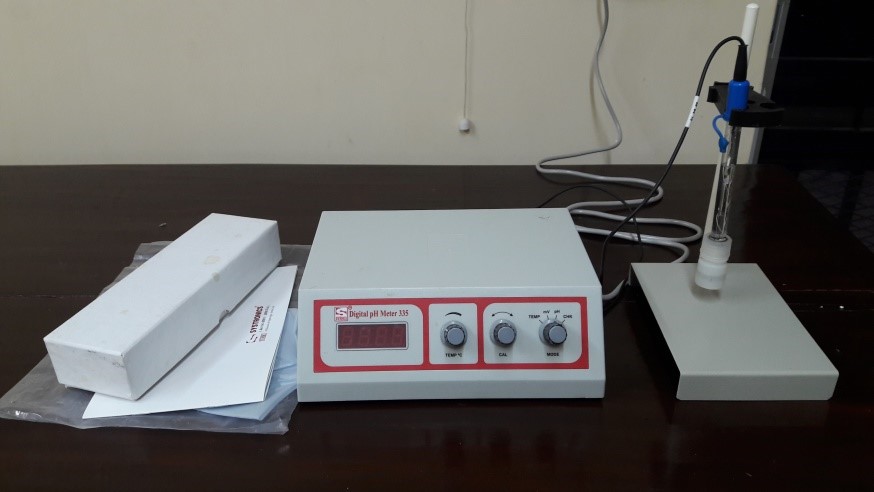



Courses presently being taught under the aegis of CBCS (Choice Based Credit System) Framework introduced by the UGC (University Grant’s Commission) in 2018 are:
(i) 3 Year (6 semester) B.Sc. (Honours) courses in Chemistry
(ii) 3 Year (6 semester) B.Sc. (General) course in Chemistry
CBCS syllabus over here
Courses presently being taught under the aegis of the Curriculum and Credit Framework (CCF) of the New Education Policy (NEP), introduced from the session 2023-24 are:
(i) 4 Year B.Sc. (Honours & Honours with Research) program in Chemistry
(ii) 3 Year B.Sc. Multi-Disciplinary Course (MDC) in Chemistry
NEP CCF syllabus over here
List of publications of Dr. Averi Guha:
1. Journal of Coordination Chemistry 63 (2010) 3714–3723.
2. Journal of Molecular Catalysis A: Chemical 338 (2011) 51-57.
3. Journal of Coordination Chemistry 64 (2011) 3872-3886.
4. Indian Journal of Chemistry 50A (2011) 1574-1578.
5. Indian Journal of Chemistry 50A (2011) 1463-1468.
6. Transition Metal Chemistry 36 (2011) 829-839.
7. Polyhedron 30 (2011) 163-168.
8. Inorganic Chemistry 51 (2012) 8750-8759.
9. Inorganic Chemistry Communications 23 (2012) 113-116.
10. Journal of Molecular Structure 1029 (2012) 169-174.
11. Polyhedron 45 (2012) 245-254.
12. Polyhedron 52 (2013) 669-678.
13. Journal of Molecular Structure 1042 (2013) 104-111.
14. Polyhedron 60 (2013) 102-109.
15. Polyhedron 49 (2013) 12-18.
16. Inorganica Chimica Acta 406 (2013) 1-9.
17. Inorganic Chemistry 53 (2014) 85-96.
18. European Journal Of Inorganic Chemistry (2014) 2753–2765.
19. RSC Advances 4 (2014) 15022–15029.
20. Indian Journal of Chemistry 60A (2021) 169-176.
21. International Journal of Current Science 13 (2023) 49-53.
22. Phys. Status Solidi A 2300351 (2023) 1-19.
23. International Journal of Research And Analytical Reviews 11 (2024) 950-954.
List of publications of Dr. Tapas K. Paira:
1. Macromol. Biosci., 2014, DOI: 10.1002/mabi.201400083.
2. Polym. Chem., 2014, DOI: 10.1039/C4PY00007B.
3. Colloid Polym. Sci., 2014, DOI- 10.1007/s00396-014-3201-4.
4. Macromol. Chem. Phys., 2013, 214, 1332-1344.
5. Macromol. Chem. Phys., 2013, 215, 440-451.
6. Soft Matter, 2013, 9, 5293-5304.
7. Macromol. Rapid Commun., 2013, 34, 1480-1486.
8. Polym. Bull., 2013, 3201-3220.
9. J. Polym. Sci. Part A: Polym. Chem., 2012, 50, 2130-2141.
10. Adv. Funct. Mater., 2012, 22, 4751- 4762.
11. J. Appl. Polym. Sci. 2012, 128, 1369–1380.
12. Polymer, 2012, 53, 5743-5753.
13. Macromolecules, 2010, 43, 4050–4061
14. Polym. Chem., 2010, 1, 1689–1695
15. Langmuir, 2010, 26, 6576-6582
16. Polymer, 2010, 51, 1258-1269
17. Langmuir, 2010, 26, 8769–8782
18. J. Polym. Sci., Part A: Polym. Chem., 2008, 46, 1111–1123
19. ChemPhysChem, 2008, 9, 1578-1584
20. Phys. Status Solidi A 2300351 (2023) 1-19.
List of publications of Dr. Debarati Ray:
1. J. Phys. Chem. C, 122 (2018) 17544-17551
2. J. Phys. Chem. B 119 (2015)10114−10123.
3. J. Photochem. Photobiol. Chem. A, 302 (2015) 42-50.
4. J. Phys. Chem. B 119 (2015) 2168–2179.
5. RSC Adv. 4 (2014)13256-13265.
6. J. Photochem. Photobiol. A, 274 (2014) 33-42.
7. SpectroChim. Acta Part A 121 (2014) 23-34.
8. J. Photochem. Photobiol. B, 127 (2013) 18-27.
9. J.Colloid. Interface. Sci. 411 (2013) 230-239.
10. Spectrochim.Acta Part A 115 (2013) 219-226.
11. Phys. Chem.Chem. Phys.15 (2013) 1275-1287.
12. Phys. Chem. Chem. Phys. 14 (2012) 12182-12192.
13. J. Phys. Chem. B, 116 (2012) 9704–9717.
14. Phys. Chem. Chem. Phys.14 (2012) 8892-8902.
List of publications of Smt. Sili Hansda:
1. Dalton Trans, (2021) 50,13374-13386
2. Inorganica Chimica Acta, 505 (2020) 119336
List of publications of Dr. Manabendra Saha:
1. Synthetic Communications, 2007, 37(4-6), 579-583.
2. Synthetic Communications, 2007. 37(12), 1989-1993
3. Green Chemistry Letters and Reviews 2008, 1(2), 113-121.
4. Green Chemistry Letters and Reviews 2008, 1(2), 99-102
5. Beilstein J. Org. Chem. 2010, 6, 748–755
6. Green Chemistry Letters and Reviews. 2011. 4(2), 137-142.
7. SRN Organic Chemistry Volume 2012, Article ID 342738, 7pages
Add-on courses:
1. Overview of Polymer Science
National-level seminar (2018):

